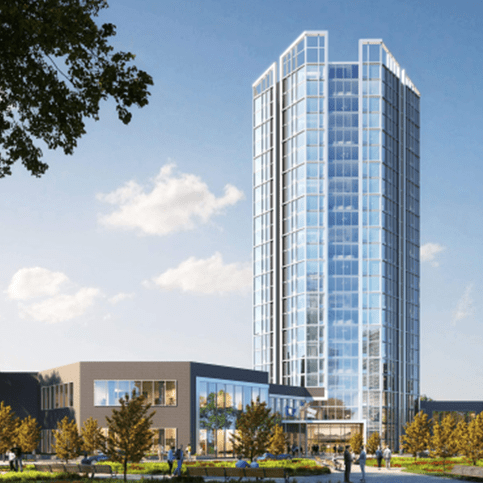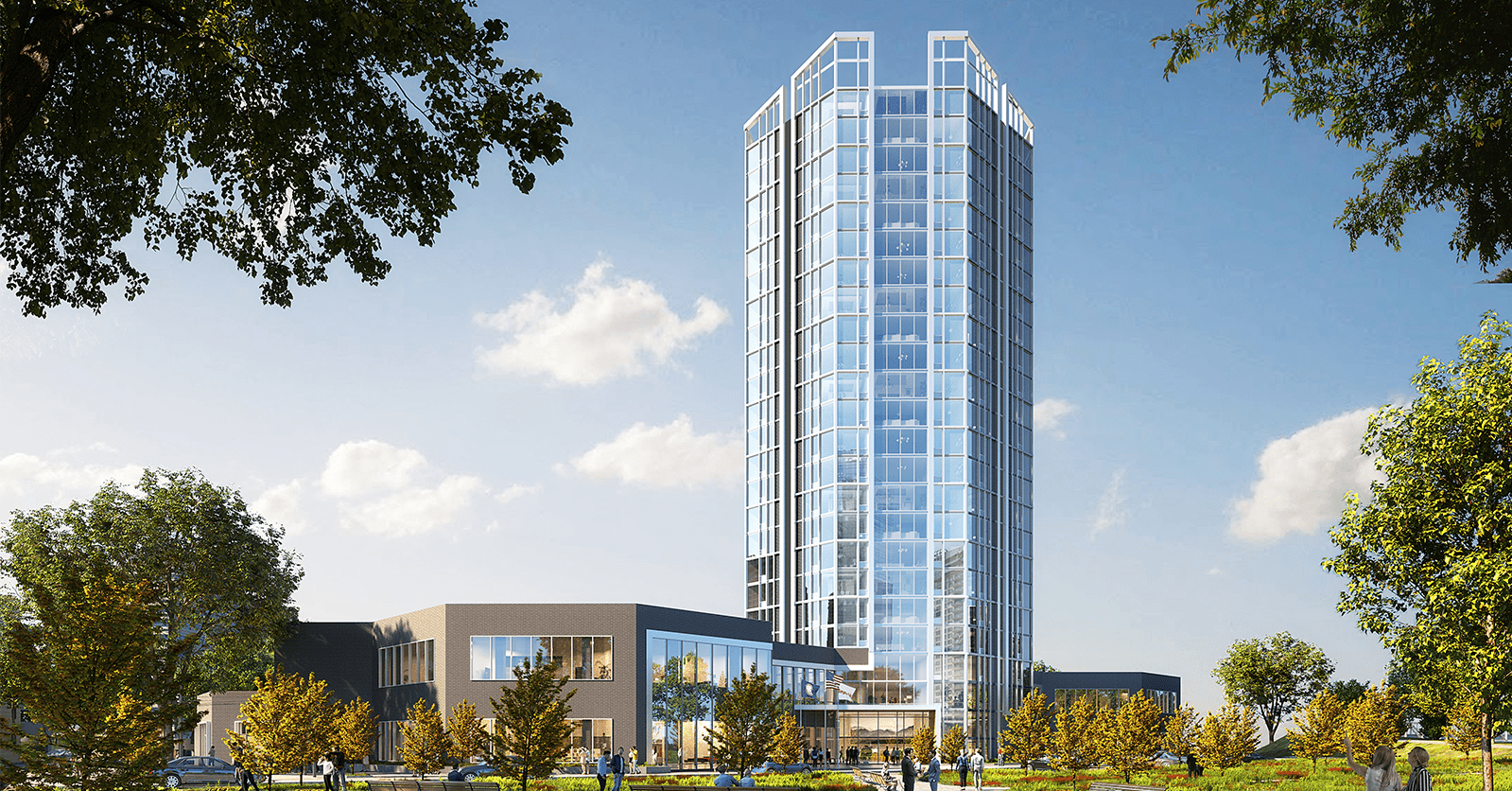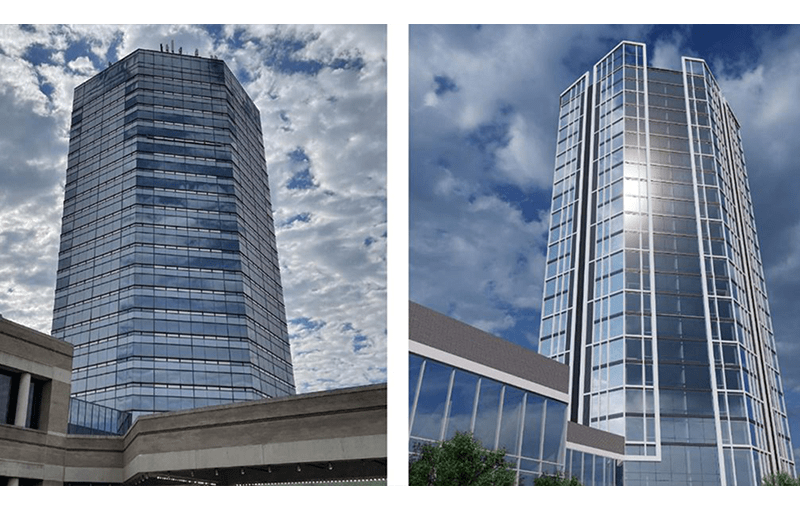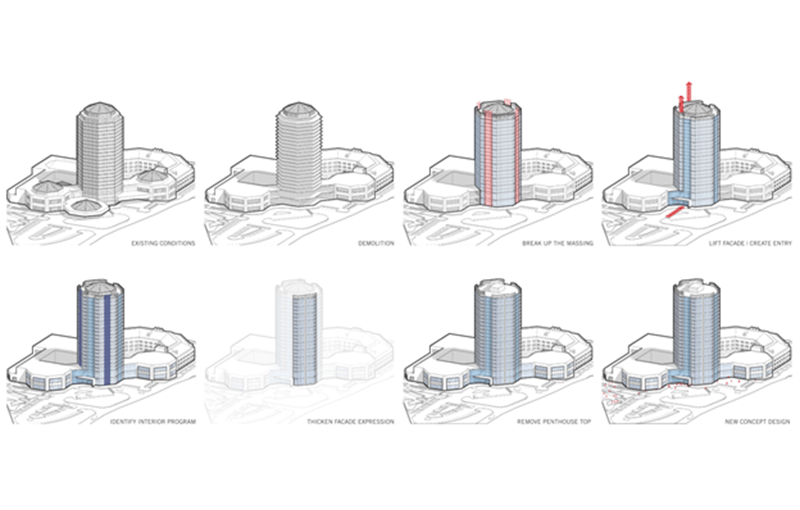In a movie script, a story may have a hero, villain and traditional story elements in which good defeats evil. This story plot is not necessarily unique or compelling on its own. What makes the story interesting is identifying who the main characters are, why they’re on their journey and how they overcome the odds to defeat evil. Without answering these questions, the story loses its luster and goes from blockbuster to just plain boring.
While we are not writing epics about good versus evil, as architects and designers we must be curious and understand the who, why and how of each project to discover the intangible value(s). Each project has tangible goals that need to be met, like functionality, efficiency, or maintaining ROI. These goals start to shape the project story. However, much like a movie script, discovering intricacies and details for smart design needs to go deeper.
Discovering the Project Story
Understanding a project story must happen before any sketch is drawn or brick is laid. Smart design begins with empathy, focused on developing the full perspective of a project’s goals and its impacts on the people who will experience it. Who will be the occupants of the space? Why will they want to be there? How should they feel in the space? We discover the answers to these questions at the beginning of every project by having a workshop with our clients called a visioning session. The goal of this session is to hear from our clients’ the answers to our questions defining intangible and tangible goals. Together we set the framework for measuring design solutions that matter most to the success of a project.
Identifying Metrics for Success
From the onset of a project, architects and designers track the project goals to create a rubric of success. Once this is established, we can then objectively evaluate design iterations throughout the lifecycle of a project. An example might be a client seeking to develop a new R&D lab space with tangible metrics of maximizing flexibility for future tenants, developing an efficient multi-tenant layout and achieving LEED v4 certification. Intangible goals may be talent attraction and retention, employee wellness and/or fostering collaboration. While intangible goals may not have a line item in a project budget, they do provide long term value to the project by creating desirable spaces and places connected to human emotion. They help create attractive spaces that allow people to feel good and help to enhance placemaking. Through our experience and independent research, we have found cognitive, psychological and physiological benefits of including biophilic elements, such as green walls and access to natural light, social interaction zones, focus work zones, and personal privacy zones, such as mother’s rooms. These design solutions solve for talent attraction and retention, employee wellness and/or fostering collaboration. Projects addressing each of the tangible and intangible goals within the ultimate design solution are the most successful in providing long term value.
Budget
Adding special features to a built space often has the stigma of requiring additional money, but not all intangible goals lead to an increase in expenditures. We recently completed design solutions for an adaptive reuse multifamily project in Tysons, VA that will transform a vacant hotel property into a 550-unit housing community. A major challenge of the project was repairing an aging curtainwall system cladding the existing tower. Instead of repairing the dated fenestration, our team identified an opportunity to replace the curtainwall with a new, more efficient window wall at nearly the same cost as repairing the existing curtainwall.
This approach led us to a design that met the tangible needs of providing ventilation and exhaust for each unit, but also helped us discover beneficial intangible values. With the design of a new façade, we were able to relocate existing plumbing to create more glass area and increase external views for several of the units in the tower, making for more desirable units in the long run. This also allowed for more efficiently designed units while giving future tenants added flexibility within the space. The updated fenestration also became an opportunity to give this building a completely new identity that will help to make this community feel fresh and inviting for future tenants and their guests.
Placemaking
Incorporating smart design and following our metrics for success leads to far greater impact on projects than tangible goals alone. This impact is often referred to as placemaking, or design that leverages the physical, social, and cultural aspects of a space to enhance wellness and happiness within its community. For the multifamily conversion, the impact of a fresh building image goes far beyond just the added value to the property. It also improves the city skyline and acts as a visual landmark for nearby residents. With new park space and access to fitness trails included in the project’s scope, it’s a landmark that serves as a beacon for community residents to gather and engage in what was previously a vacant and unused asset.
Ultimately, our role as designers is to demystify the design process and communicate the value of each decision made. Intangible goals create the soul of a project, thereby connecting to its users, driving demand which in turn drives long term value.





